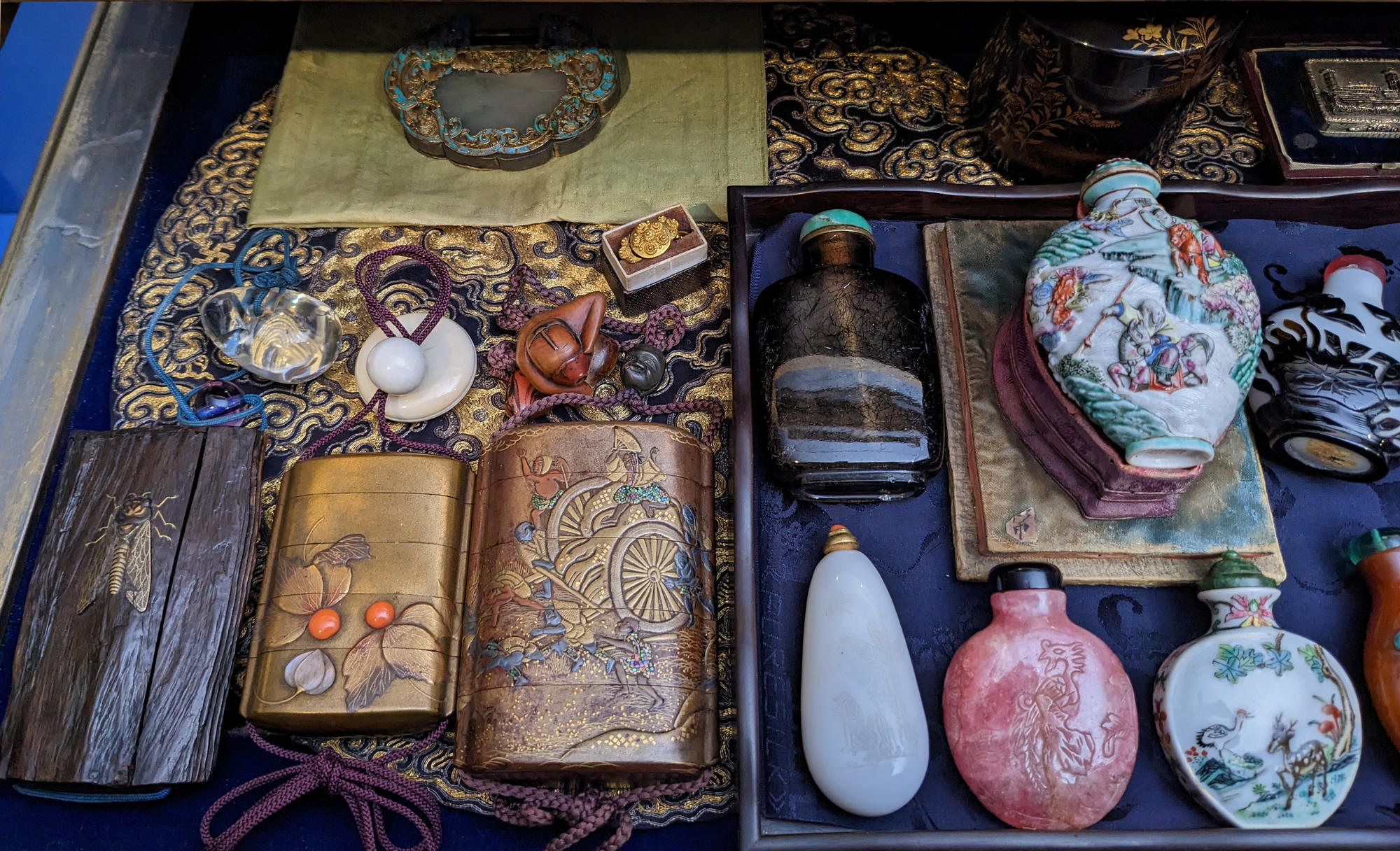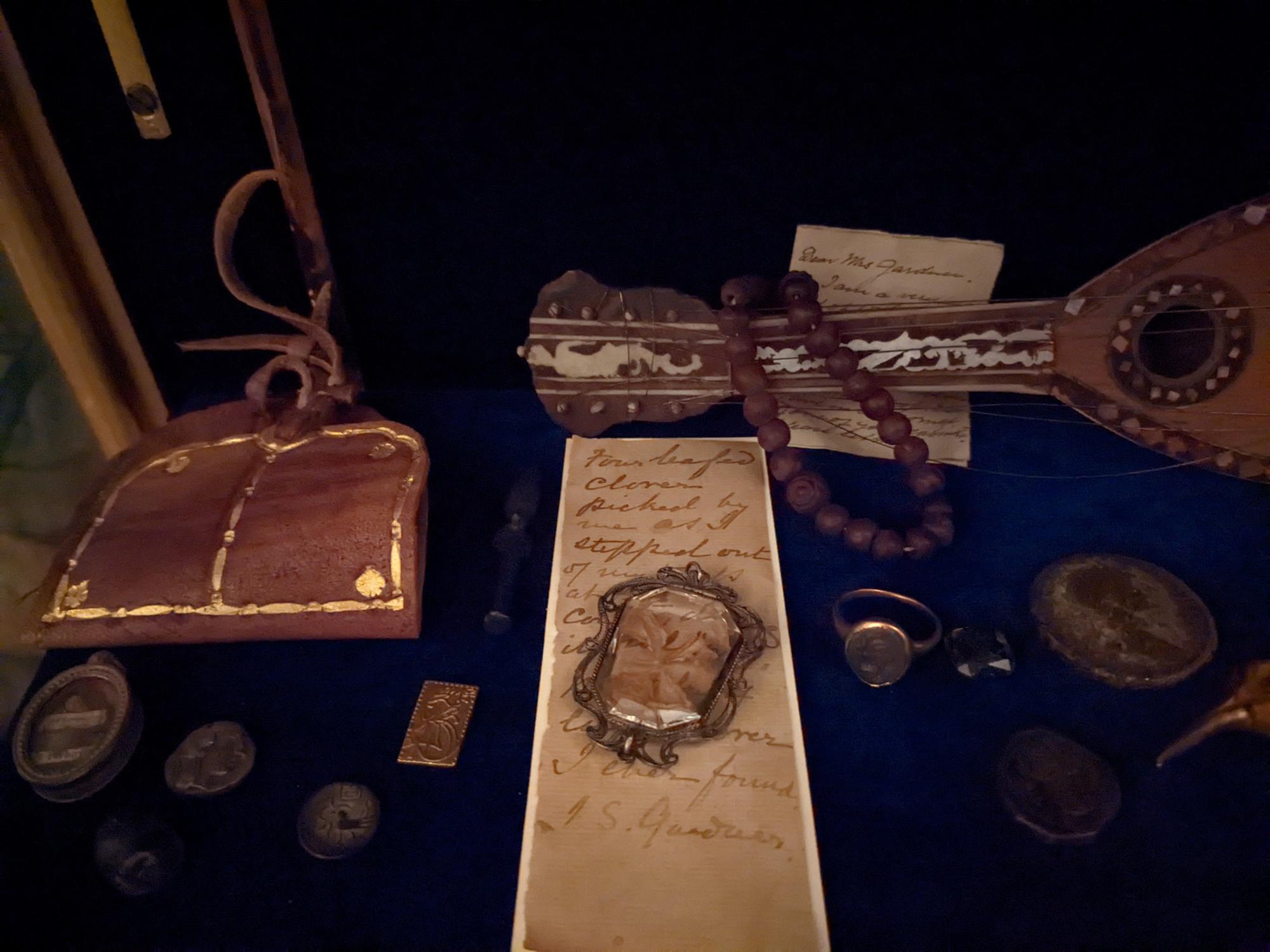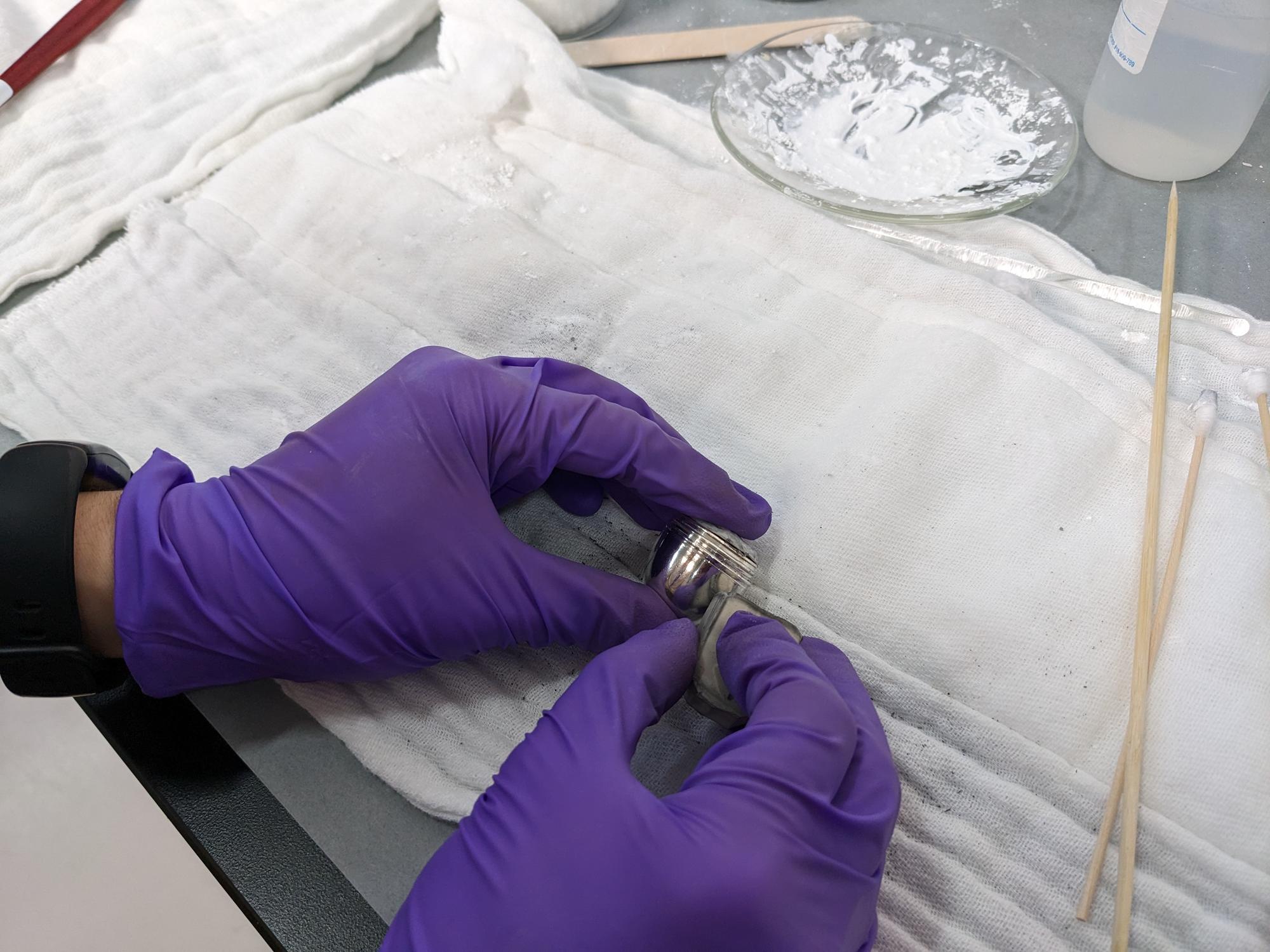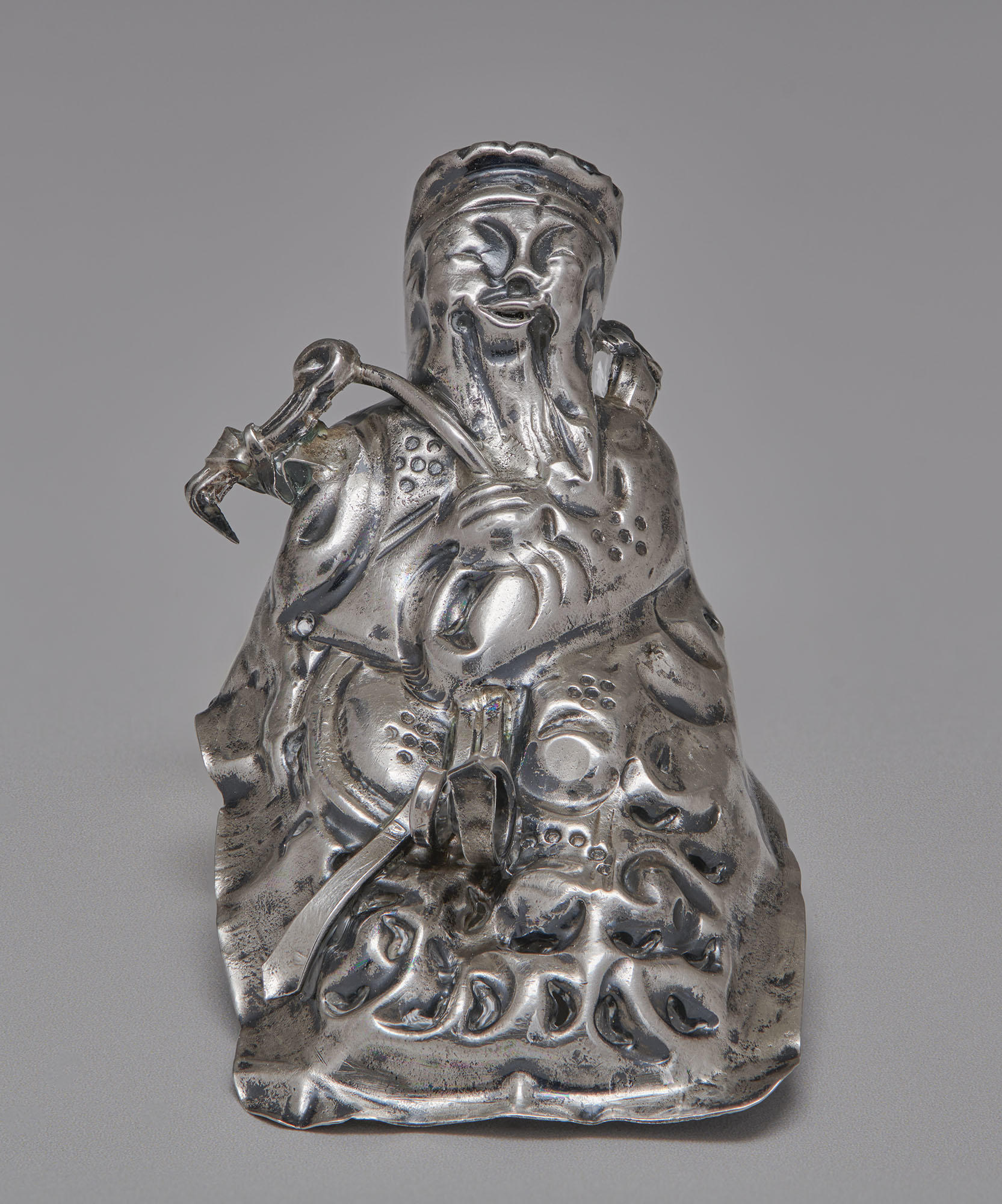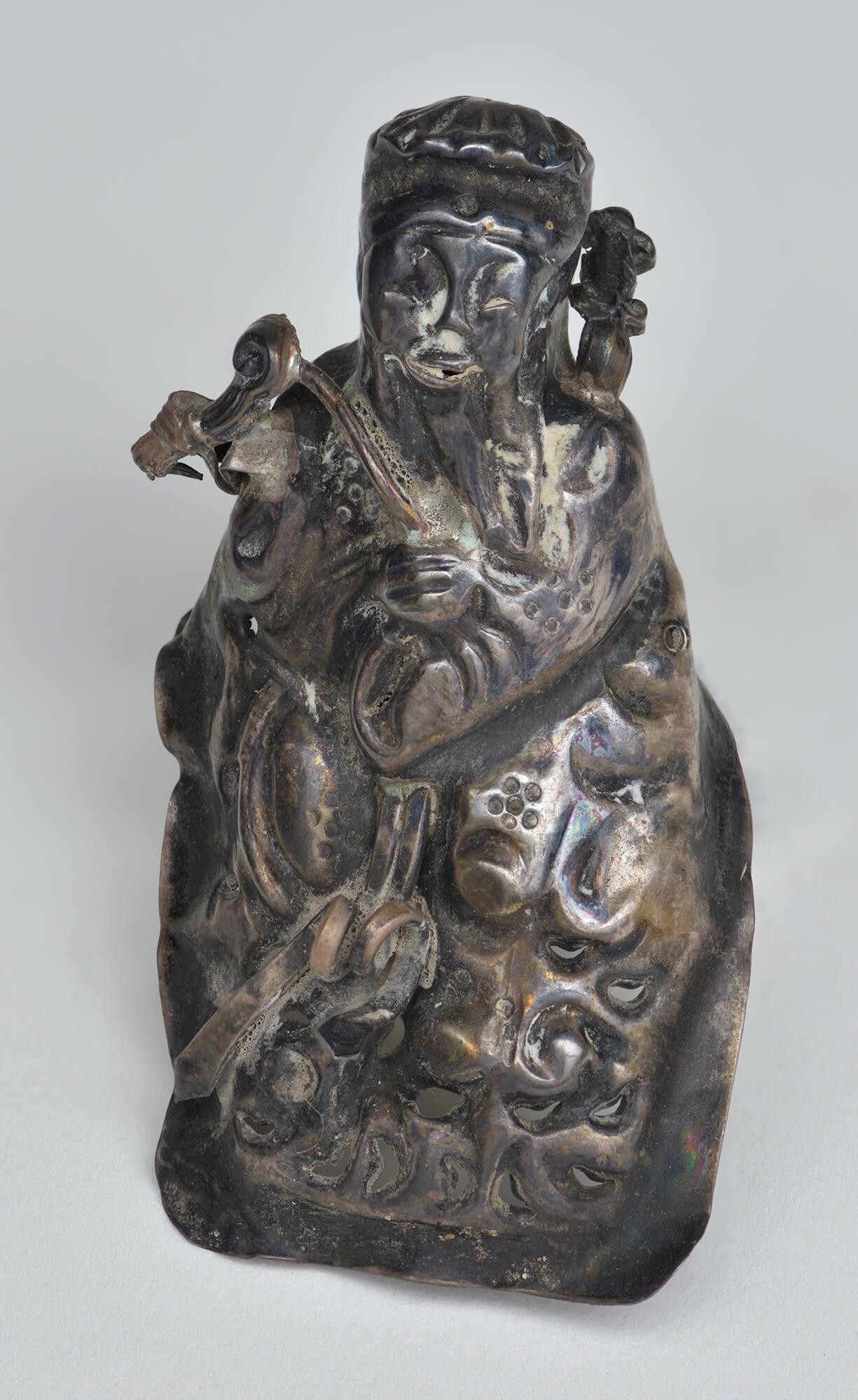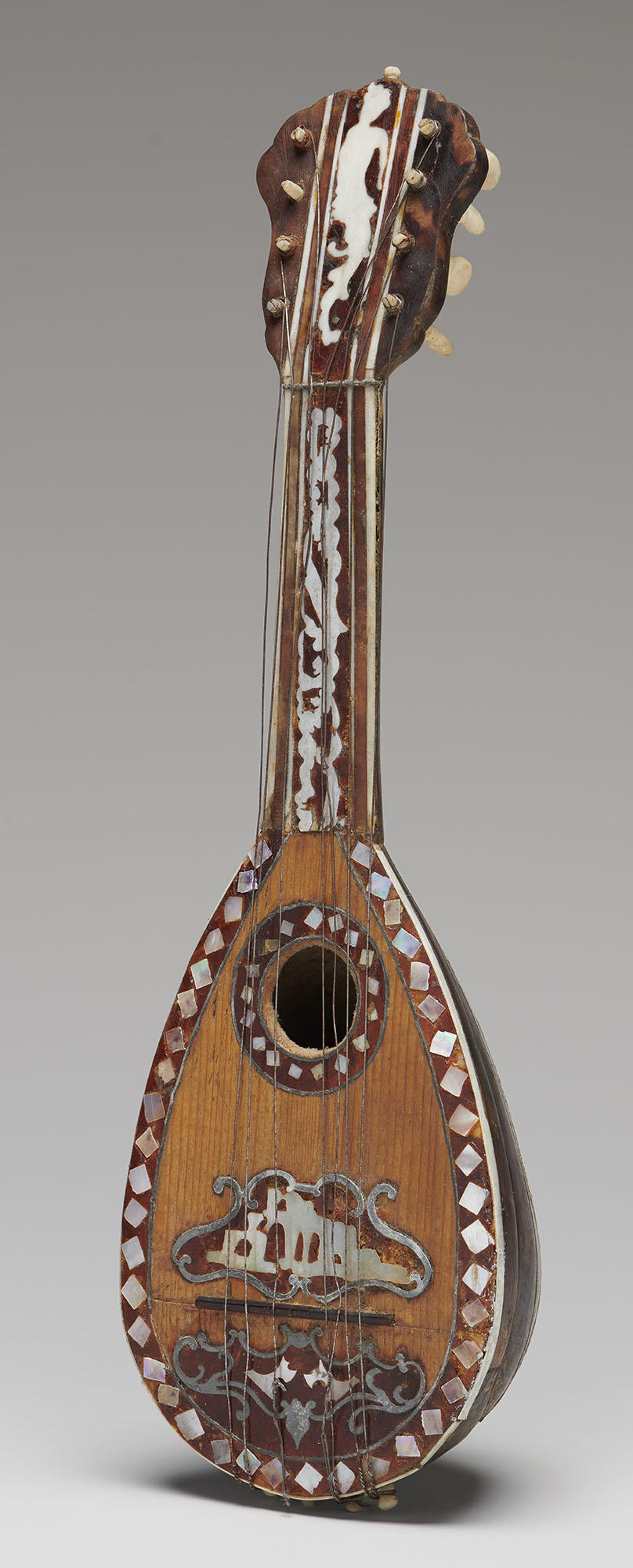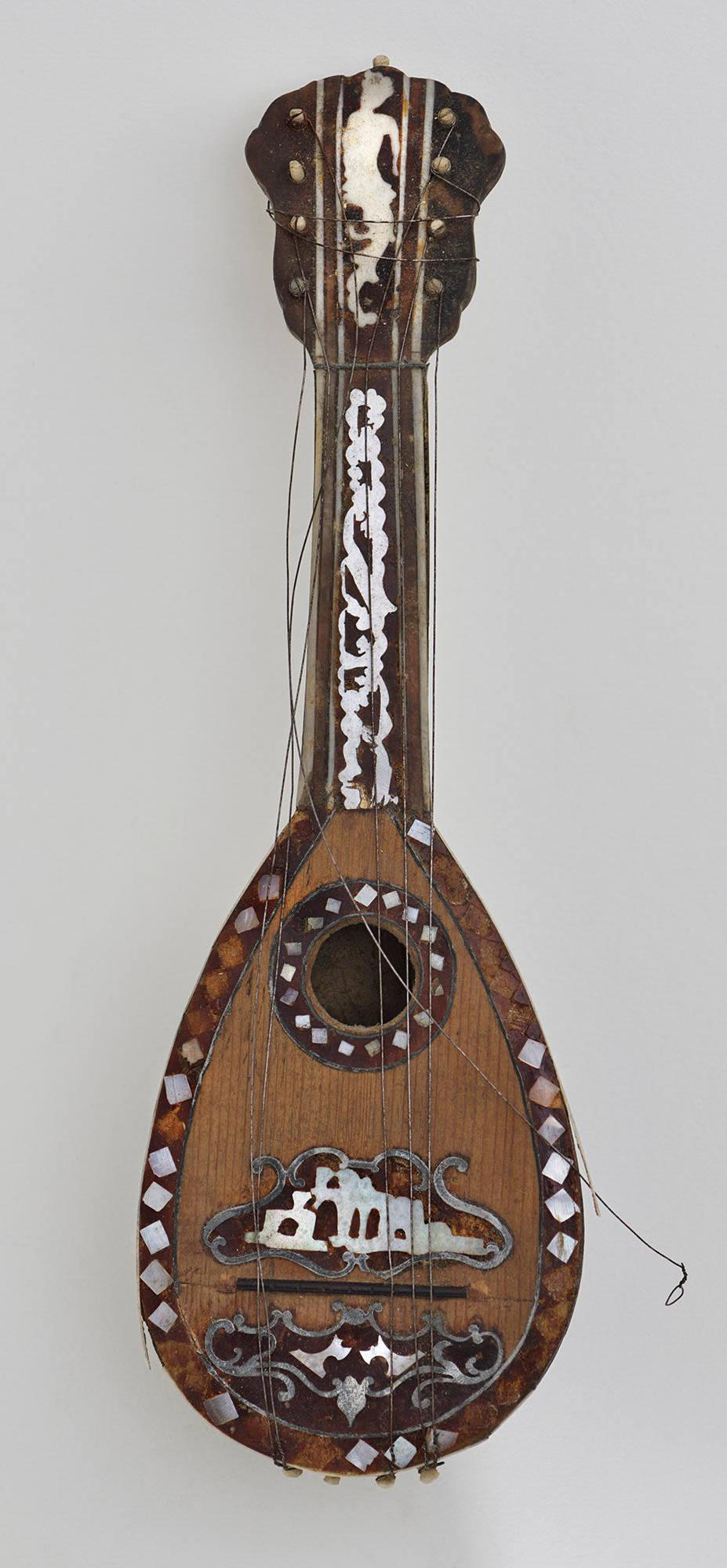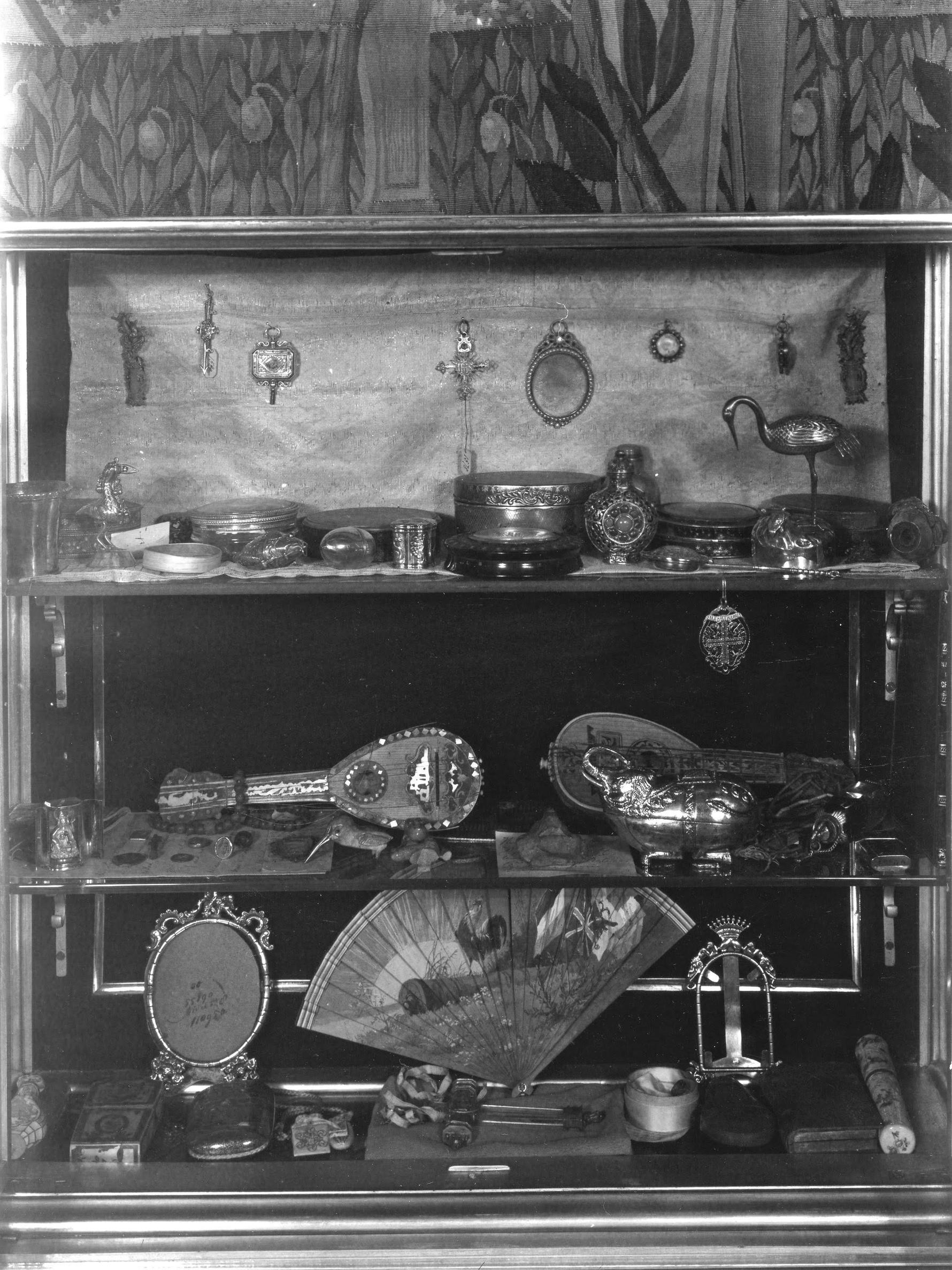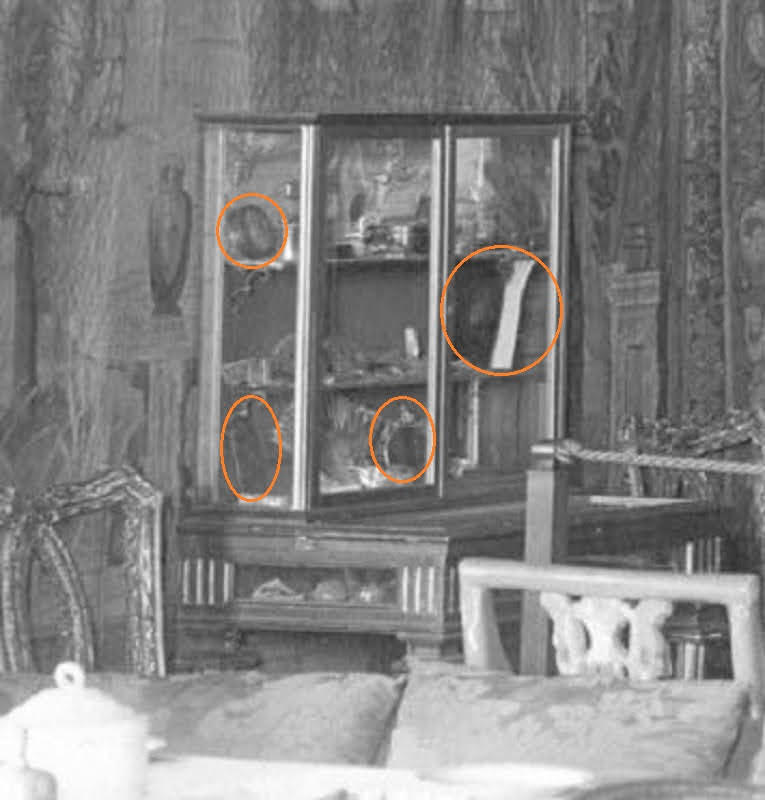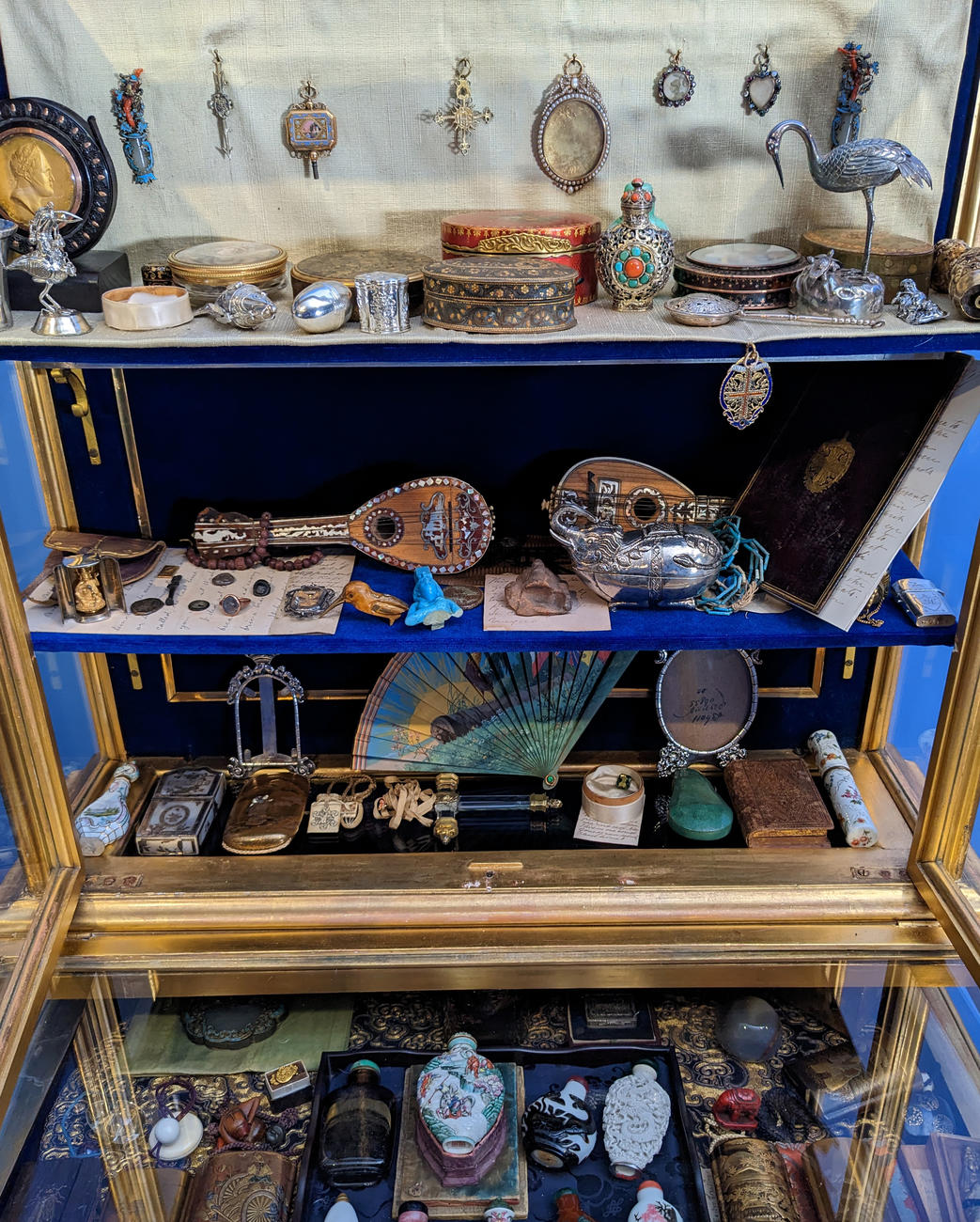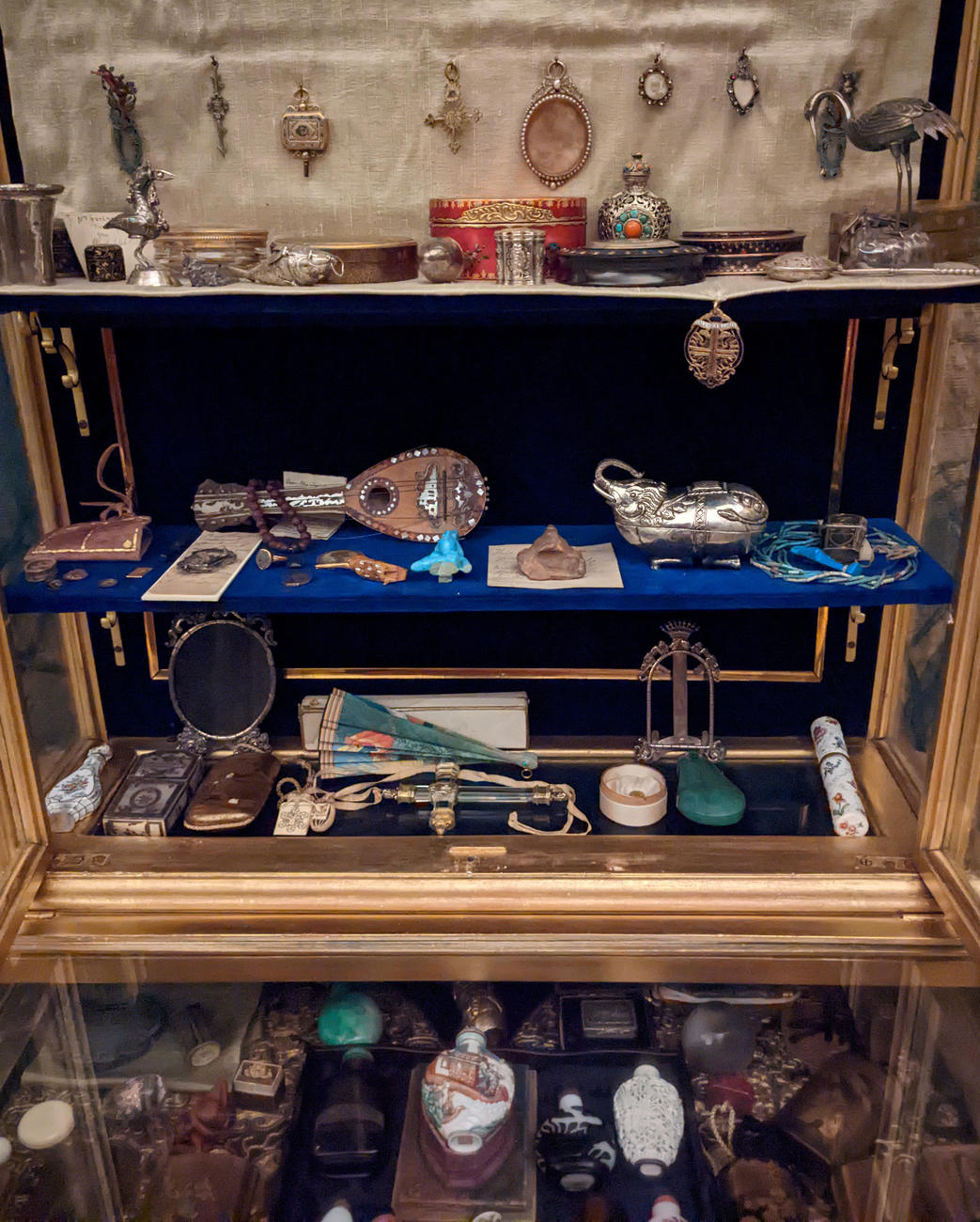Isabella Stewart Gardner was a lover of maximalist design long before the term was coined. The Victorian era into which Isabella was born and came of age commonly embraced dense, layered aesthetics. Tucked into a corner of the Gardner Museum’s Little Salon, an early 19th century gilt vitrine and its contents offer the quintessential showcase of this vision. Bursting with color and texture, the collection displays objects from many places around the world, including some where Isabella herself traveled, such as India, Japan, and Italy.
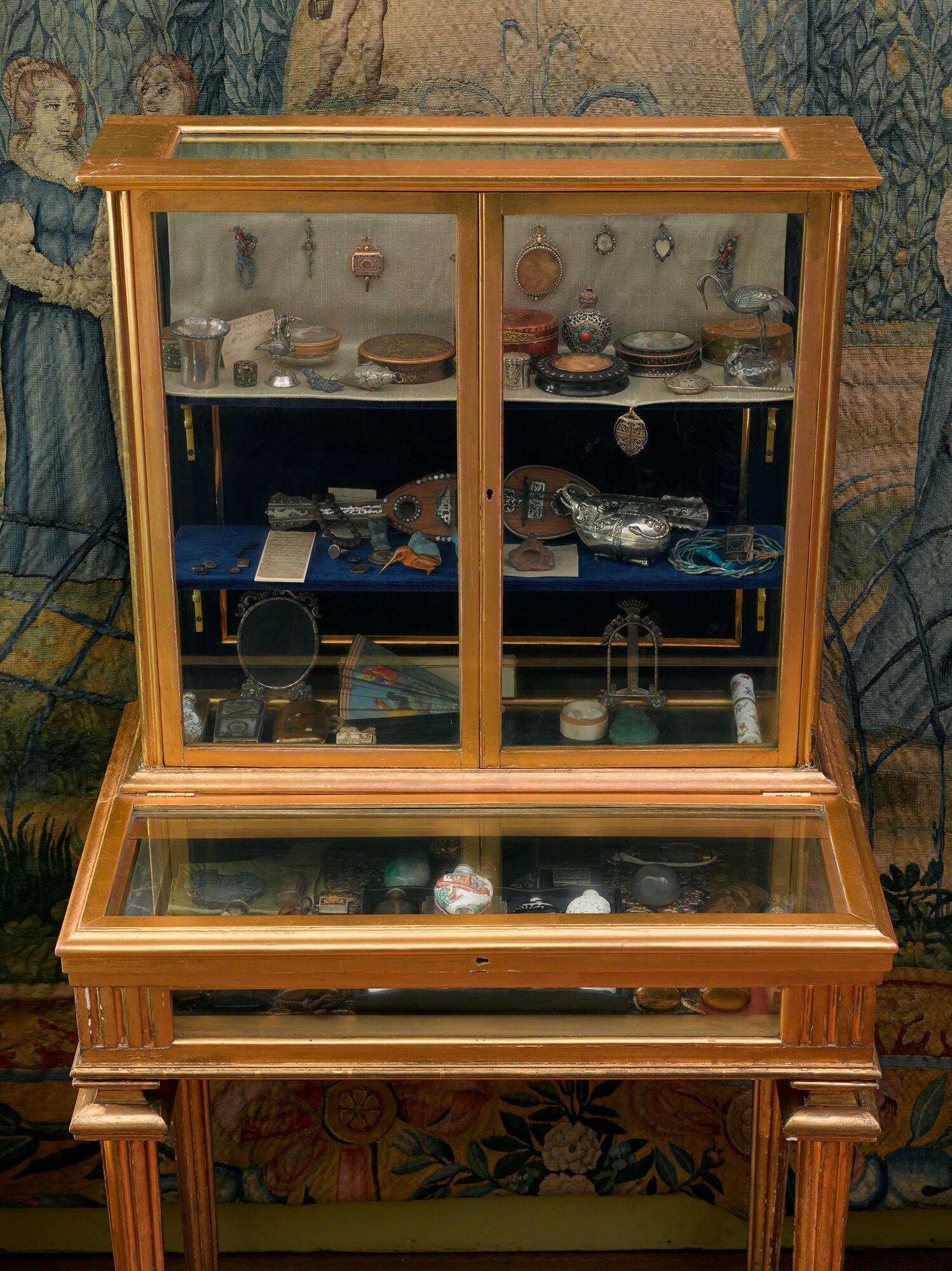
Isabella Stewart Gardner Museum, Boston (F18e37). See it in the special exhibition Betye Saar: Heart of a Wanderer through May 21, 2023 or in the Little Salon.
French or Italian, Vitrine, early 19th century. Gilded wood , 137 x 71 x 45 cm (53 15/16 x 27 15/16 x 17 11/16 in.)
Because the vitrine is typically on view behind a stanchion in a crowded part of the museum’s second floor, visitors may not have the chance to notice the details and clever relationships between objects that Isabella created. A 2023 exhibition provided a unique opportunity for closer examination when the vitrine was featured in the Gardner Museum’s show, Betye Saar: Heart of a Wanderer. As a fellow traveler and a person seeking to create meaning through the thoughtful juxtaposition of objects, Isabella shares some key sensibilities with contemporary American artist Betye Saar.
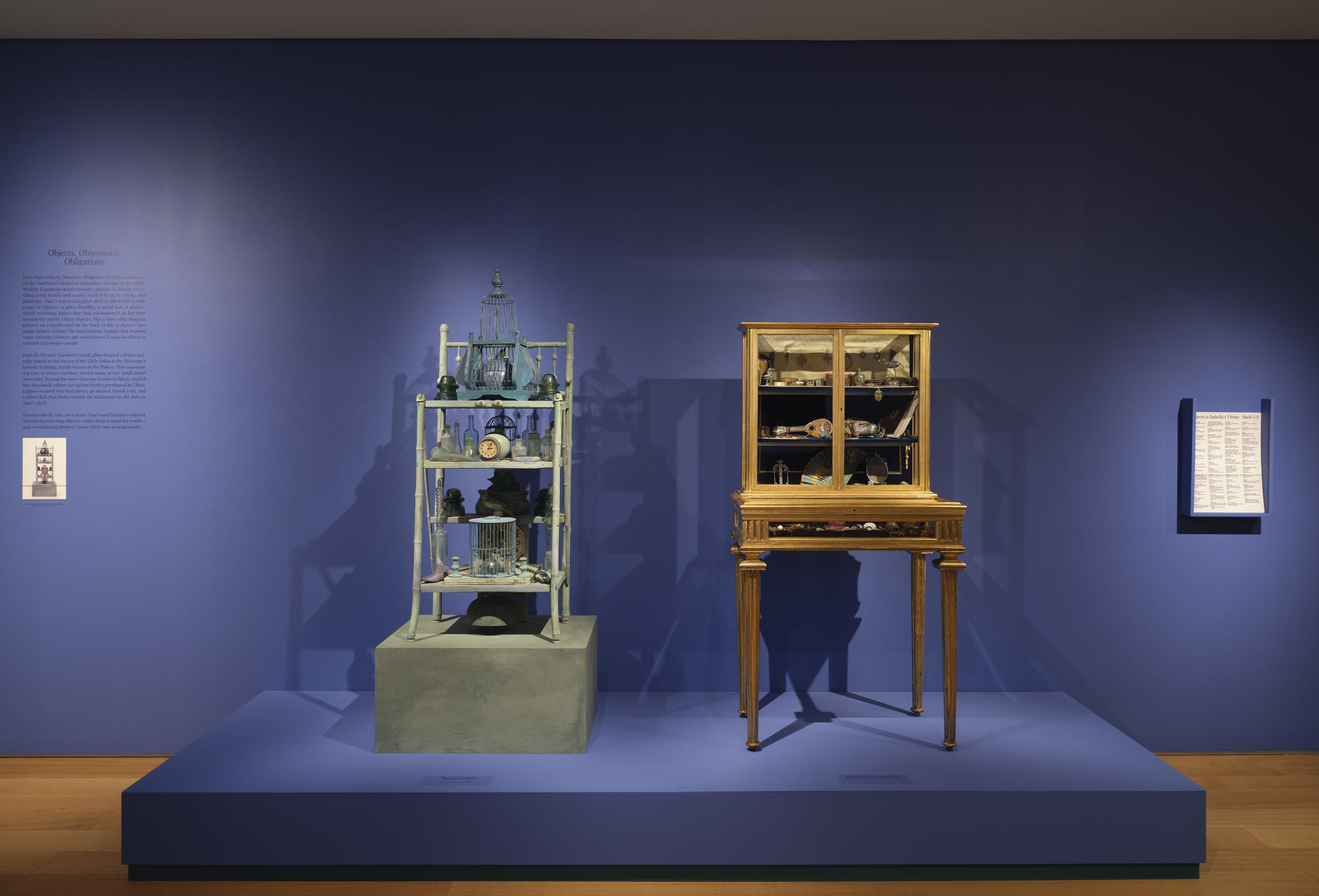
Isabella Stewart Gardner Museum, Boston.
Betye Saar (American, b. 1926), Objects, Obsessions, Obligations, 2013 and Isabella Stewart Gardner’s vitrine from the Little Salon, in the special exhibition Betye Saar: Heart of a Wanderer, Isabella Stewart Gardner Museum, February 16 – May 21, 2023.
The objects contained in the vitrine vary from the pedestrian to the profound. There are numerous small containers: snuff boxes, perfume bottles, and Japanese inro—portable, tiered boxes that could be used to carry medicine. There is also, on the left side of the second shelf, a four leaf clover that Isabella claimed to have found on the museum site at the groundbreaking. She saved and preserved the specimen in a crystal and silver pendant. In a note displayed below the object, she describes it as “the only 4 leafed clover I ever found.”
In October 2022, Conservation and Collections staff deinstalled the gilt vitrine and the nearly 100 objects it contains. Conservation staff used this occasion to clean and stabilize many of the vitrine’s objects prior to their inclusion in the exhibition.
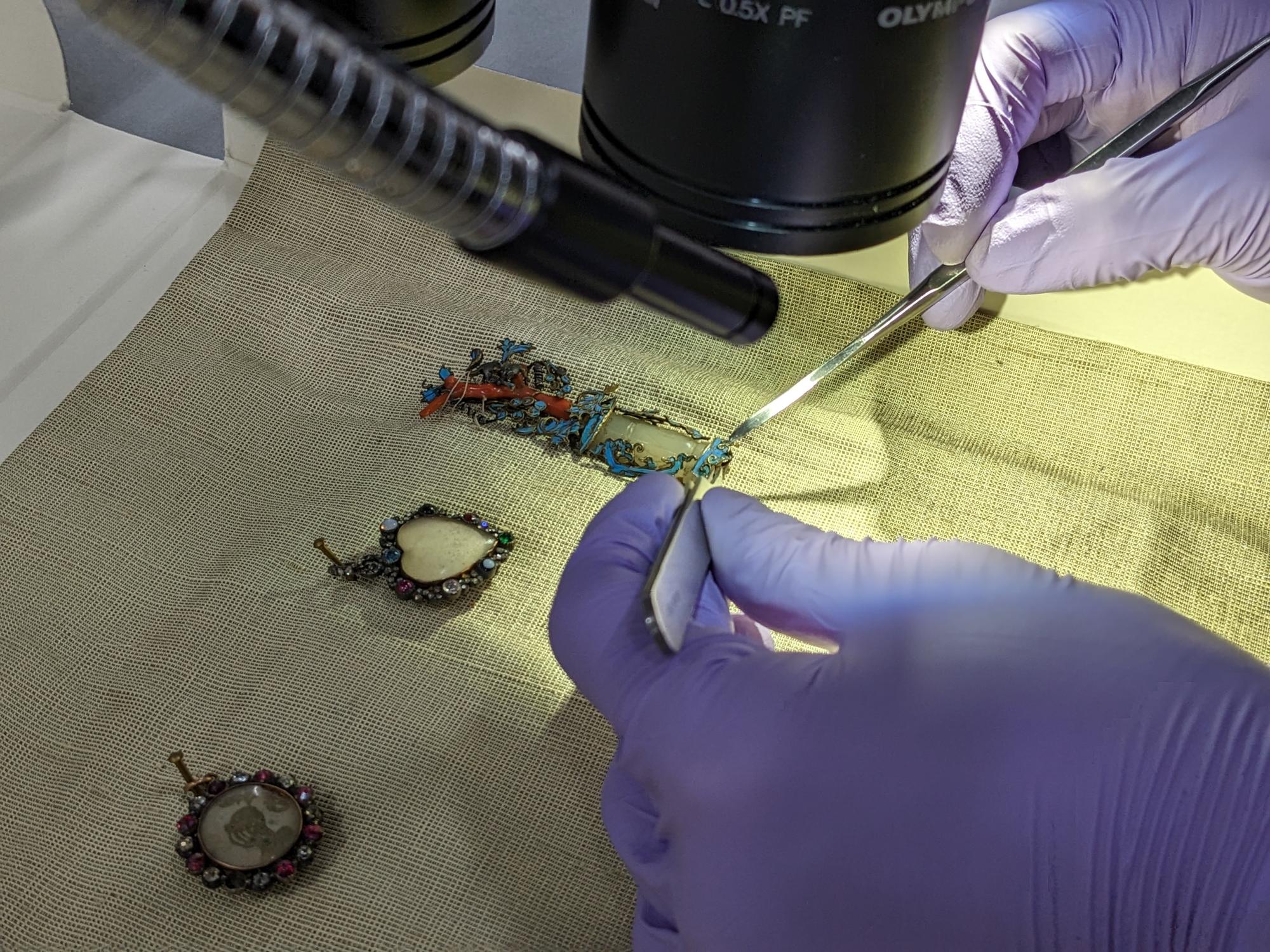
Conservation staff working on a 19th century Chinese hair ornament with jade, coral, cloisonné, metalwork, kingfisher feathers from the gilt vitrine.
Isabella Stewart Gardner Museum, Boston (U18e38.1-2)
Several of the objects that required cleaning were silver items, including a high relief figure thought to portray one of the Eight Daoist Immortals, Lü Dongbin. Silver polishing must be carried out with a gentle material. Conservators used a paste made from calcium carbonate, essentially powdered chalk. After cleaning, silver objects are often coated with a lacquer that dries to form a clear film. This helps to protect the object from tarnish.
Some treatments were more complex. One of the two miniature instruments in the vitrine, a 16th century Italian mandolin, needed repairs to its strings, which had broken and detached from the tailpiece. Conservation staff also stabilized the ivory embellishments on the mandolin and cleaned the instrument using cosmetic sponges. Finally, conservators added tiny pieces of mother-of-pearl to fill losses and complete the existing design.
Meanwhile, Associate Registrar of the Collection, Kathleen King, was busy researching the historic appearance of the vitrine. Archival photographs taken in 1926 and 1942 show how the layout changed over time. Wherever possible, we aim to use the 1926 images, taken shortly after Isabella’s death, as our guide in determining appropriate gallery appearance. These photos revealed that some objects had been removed from the vitrine, while others had been swapped to a different spot within the case.
These changes seem minor, until you consider the visual harmony and connections between objects that Isabella tried to create through her placements. For example, in the 1926 photographs, you can see a leather-bound Italian book leaning against the right side of the vitrine. The gilt cross emblem on the front cover relates to the cross pendant suspended from the top shelf, just above the book. Collections and Conservation staff restored as many of the original placements as possible: creating reproduction letters, making a new mount so that an object could be shown upright, and even fabricating a new silk-covered box lid to replace the missing original.
Isabella Stewart Gardner Museum, Boston (F18e37)
The gilt vitrine and its contents before (right, October 2022) and after (left, February 2023) conservation work and the reinstallation with the historically appropriate layout
Next time you visit the vitrine, spend some time noticing the interplays of color and form that Isabella intended. Crafting this display seems to have been a labor of love for Isabella, just as the restoration of the vitrine has been for numerous Gardner Museum staff members.
You May Also Like

Explore the Museum
The Little Salon

Visit the Exhibition
Betye Saar: Heart of a Wanderer

Read More on the Blog
The Largest Mirror
